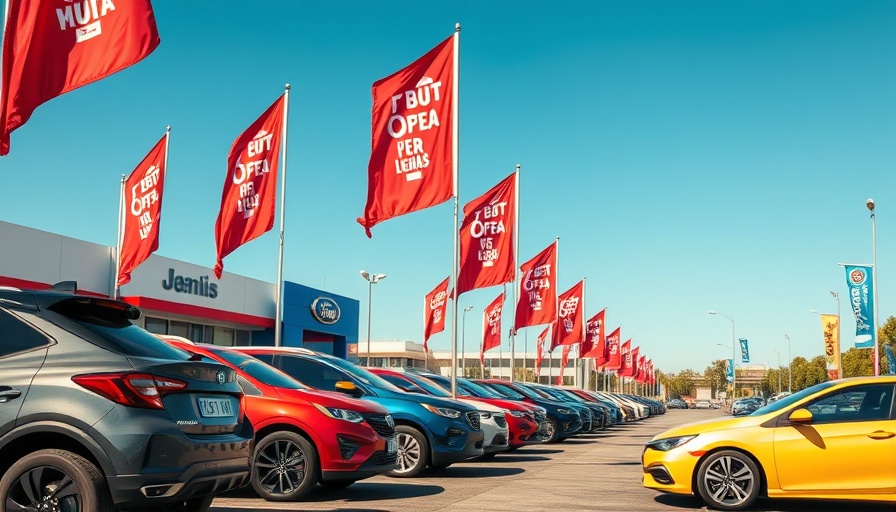
The Impact of Auto Tariffs on Vehicle Prices
New tariffs imposed by the U.S. government are predicted to increase the price of vehicles by nearly $2,000 on average. A report from AlixPartners reveals that about 80% of the $30 billion tariff cost will ultimately be transferred to consumers, adding significant pressure to an already burdened market. For buyers in and around Bakersfield, California, this could mean fewer options and higher long-term costs for new vehicles.
Understanding the Tariff Landscape
These tariffs, originally set in motion during the Trump administration, represent a pivotal point in automotive pricing strategies. Mark Wakefield, global auto market lead for AlixPartners, solidifies this sentiment by explaining that consumers will experience the brunt of these costs. “These tariffs bring a big wall of cost,” he stated during a briefing, further emphasizing the financial pain faced by car buyers.
Sales Projections and Market Adaptations
According to AlixPartners, the imposition of these tariffs could lead to approximately 1 million fewer vehicles sold within the next three years. However, looking forward, there is a silver lining: the firm predicts a rebound, estimating that U.S. auto sales could reach 17 million vehicles by 2030. This recovery hinges on potential negotiations that might ease tariff rates over time.
The Broken EV Market
Another significant concern stemming from these tariffs is the future of electric vehicles (EVs). As the government shifts its focus away from incentives for EV purchases, experts fear that American automakers will struggle to compete globally, especially against market leaders like China. AlixPartners has notably revised its forecast for EV sales, downgrading expectations significantly from 31% to just 17% of total sales by 2030. Wakefield warns that this trend may lead U.S. manufacturers to depend heavily on foreign technologies for their EV platforms.
Addressing the Needs of Bakersfield Consumers
For residents in Bakersfield, understanding the broader implications of these tariffs is crucial. With rising prices, buyers may feel tempted to shift back toward traditional gasoline-fueled vehicles, especially as the cost of EVs rises. Wakefield’s assessment that traditional internal combustion vehicles will account for half of U.S. sales near the end of the decade reflects a significant shift in consumer behavior driven by financial considerations.
Navigating the Changing Auto Market
As consumers navigate this evolving landscape, it is essential to consider how these tariffs will shape long-term spending on automobiles. With the potential for decreased choices and increased costs, buyers should evaluate their purchasing strategies closely. It may also be wise to explore various financing options now before the full impact is felt in the market, thereby securing better deals while they still exist.
Taking Action: What Can Car Buyers Do?
For consumers looking to make informed decisions, staying updated on market trends and government policies is essential. Engaging in community discussions and reaching out to local dealerships for insights can help buyers not only understand the current landscape but also prepare for upcoming changes that could affect their purchases. Sharing concerns with local representatives may influence future policies on tariffs and EV incentives that impact everyday consumers.
As car prices sit at a critical point due to mandated tariffs, acknowledging how these changes affect individual purchasing power is important. Understanding these dynamics arms Bakersfield residents with knowledge, helping them make the most informed automotive purchasing decisions moving into the next decade.
 Add Row
Add Row  Add
Add 



Write A Comment